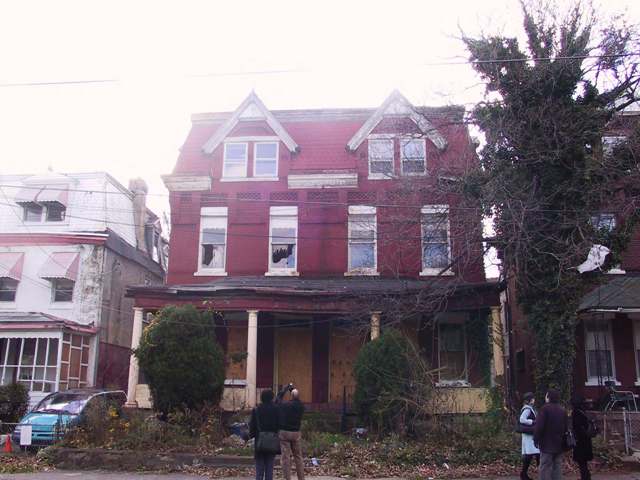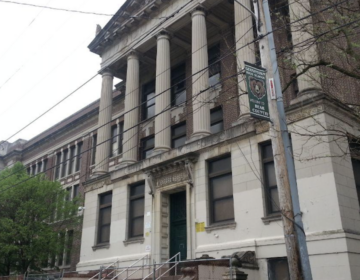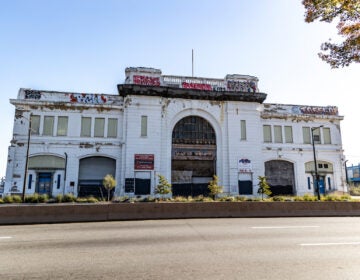Sense of Place conference hits home

Learn about proposal to rehab 6 vacant units on West Tioga Street for low-moderate home ownership
May 16
By Alan Jaffe
For PlanPhilly
A 19th-century industrial village in the Northeast. A 1960s housing development for African Americans in North Philadelphia. An early 20th-century enclave built around the arrival of the El in West Philly.
These were among many settings for stories that emerged Friday morning during the first conference on “A Sense of Place: Preserving Philadelphia Neigborhoods,” presented by the Preservation Alliance for Greater Philadelphia. About 150 participants met at Temple University Center City to celebrate their neighborhood heritage and to learn how to protect and preserve their buildings, populations, economies and civic pride.
For 12 groups vying for some financial support, the conference highlight was the presentation of $1,500 seed grants to two proposed preservation projects. “Germantown Speaks,” a series of public history programs coordinated by the Neighborhood Interfaith Movement, will examine 20th century life in the community. Germantown High School students will conduct interviews with longtime residents and then create public events in historic sites, a video, exhibit and brochure. The other winner of a $1,500 grant was the “Delaware River Lost-Found Scavenger Hunt,” a project of the New Kensington Community Development Corporation. The hunt will reveal the rich history of the riverfront neighborhood and the grant will be used to create a map that shows significant sites.
Overwhelmed by the quality of candidates for seed grants, the Preservation Alliance also announced two surprise grants of $1,000 each to the Vineyard Community Church’s plan for a guide to the historic houses of worship along Baltimore Avenue from 40th to 52nd Streets, and to Powelton Village Civic Association to create banners for homes and the commercial corridor celebrating the area’s Sesquicentennial.
Alliance executive director John Gallery said the overarching purpose of the conference was to bring together diverse community groups and the preservation community to share their problems, strategies and resources.
Philadelphia has more national landmarks than any other city, except Washington D.C., he noted. “There are many great assets we’ve inherited from the past, and we can use them to revitalize our great communities.”
The extraordinary identity of this city is found in the residential character of its neighborhoods – in the twin houses of North Philadelphia, the ornate homes of Mt. Airy, the stone structures of Germantown, the distinctive architecture in West Philadelphia, and “the wonderful little streets” found in unexpected places, Gallery said. “It’s our challenge to maintain and improve them.”
Only a tiny percentage of the city is officially recognized as being historically important, however. A map of designated sites shows a dense concentration in Center City and a string of locations along Germantown Avenue. To expand that map and an appreciation for neighborhood histories, the Alliance has created a 10-year Strategic Vision and Action Agenda and plans to trace the development of Philadelphia and a citywide survey of historic resources.
The first phase of the survey, found at www.preservephiladelphia.org, asks residents what is important to their neighborhoods. Individuals can submit comments, photographs, and pleas for what they want to save in their communities. Gallery urged everyone to offer suggestions for landmarks, buildings, parks, cemeteries, even industrial symbols that tell the story of their neighborhoods.
At an educational session that addressed “Preservation Basics,” Patrick Hauck, director of Neighborhood Preservation Programs for the Alliance, explained that the focus of efforts can be a district, a public space, the diversity of communities, or some other physical link to people or events.
In Philadelphia, 10,700 resources are currently on the Philadelphia Register of Historic Places, including 3,836 buildings and 10 districts. Applications for inclusion are approved within five days for 85 percent of the nominations; large, more complex applications can take considerably longer, Hauck said.
When the battle becomes more involved, preservationists are too often seen as obstructionists, said Sabra Smith, advocacy associate for the Alliance. Better planning and community engagement can avoid some confrontations, she said. Smith urged neighborhood groups to form a “Nominating Club” that identifies important sites and initiates the preservation process.
Three communities that have gone far beyond that initial phase offered presentations in a session devoted to “Celebrating Philadelphia Neighborhoods.”
Lou Itarola, of the Historical Society of Tacony, used archival and contemporary photos and maps to tell the story of his Northeast neighborhood, which has applied for historical district status. Itarola’s group and the Tacony Civic Association have worked together to trace their community’s history from Colonial settlement, through mid-19th century farming and fishing village, to Industrial Age terminus for trains and ferries, to 20th century decline and revival. Tacony’s heritage is honored now with murals, tree-plantings, and a History Day parade and festival. The Tacony CDC restores historic properties, and the community sustains a 19th-century ban on the sale of alcohol.
The modern history of North Philadelphia’s Yorktown community was related by 26-year resident Pam Pendleton-Smith. Designed by Edmund Bacon, Yorktown was developed in 1960 as a model for transformation of urban blight into suburban housing in the city for African American residents, Pendleton-Smith explained. In recent decades, the neighborhood has come “under attack by speculators” trying to turn the single-family homes of Yorktown into rooming houses and apartments for Temple University students. The community responded with the formation of The Resolute Alliance in Yorktown (TRAY), which concentrates on court battles, while other groups “celebrate the physical, social, spiritual and cultural” aspects of the neighborhood. A Yorktown Day Celebration has been held every August since 1995, and a banquet and ceremony are planned for next year’s 50th anniversary of the unique and now diverse community.
J. Holland Brown, of the Carroll Park Community Council, described the great strides in her neighborhood, which sprang up in the first half of the 20th century around the path of the elevated train. Carroll Park has retained many of its original families, and its civic groups work to protect its blocks and the senior citizens who make up much of the population. At the same time, the Council and the Partnership CDC strive to attract new, younger residents who may be drawn to the beautifully restored Carrol Park, one of the few green spaces in West Philadelphia north of Market.
In the conference audience were community leaders facing many challenges and hoping to find some answers in the fights waged in other neighborhoods. Alice Gabbadon, of South Philadelphia H.O.M.E.S. Inc., recalled the turbulence of the 1960s that left much of Point Breeze burned and shuttered, and the crime and drugs that ravaged the area in the ’70s and ’80s. “We are still healing and grieving,” Gabbadon said, but they are also planning and working.
The neighborhood is being revived, as developers recognize the value of the sports stadiums and the proximity to the airport. Gabbadon and her neighbors are trying to ensure that the development includes affordable housing. And they are hoping to revive the once bustling commercial corridor of Point Breeze Avenue. Gabbadon also sees an opportunity to preserve the area’s beautiful churches and the rich history of her community.
Verna Tyner, of Tioga United, said her group is “rebuilding the neighborhood one step at a time.” The organization coordinates cleanups, a community newsletter, and a senior citizens program. But seniors have trouble maintaining their homes, she said. “For them, it’s buying medicine or fixing the façade of the house.”
Tyner came to the conference to learn about historic preservation and how to build an organization through relationships with other groups. “We’re trying to preserve what we have,” she said. “I want to learn how to keep our treasured memories alive.”
Contact the writer at alanjaffe@mac.com.
WHYY is your source for fact-based, in-depth journalism and information. As a nonprofit organization, we rely on financial support from readers like you. Please give today.






